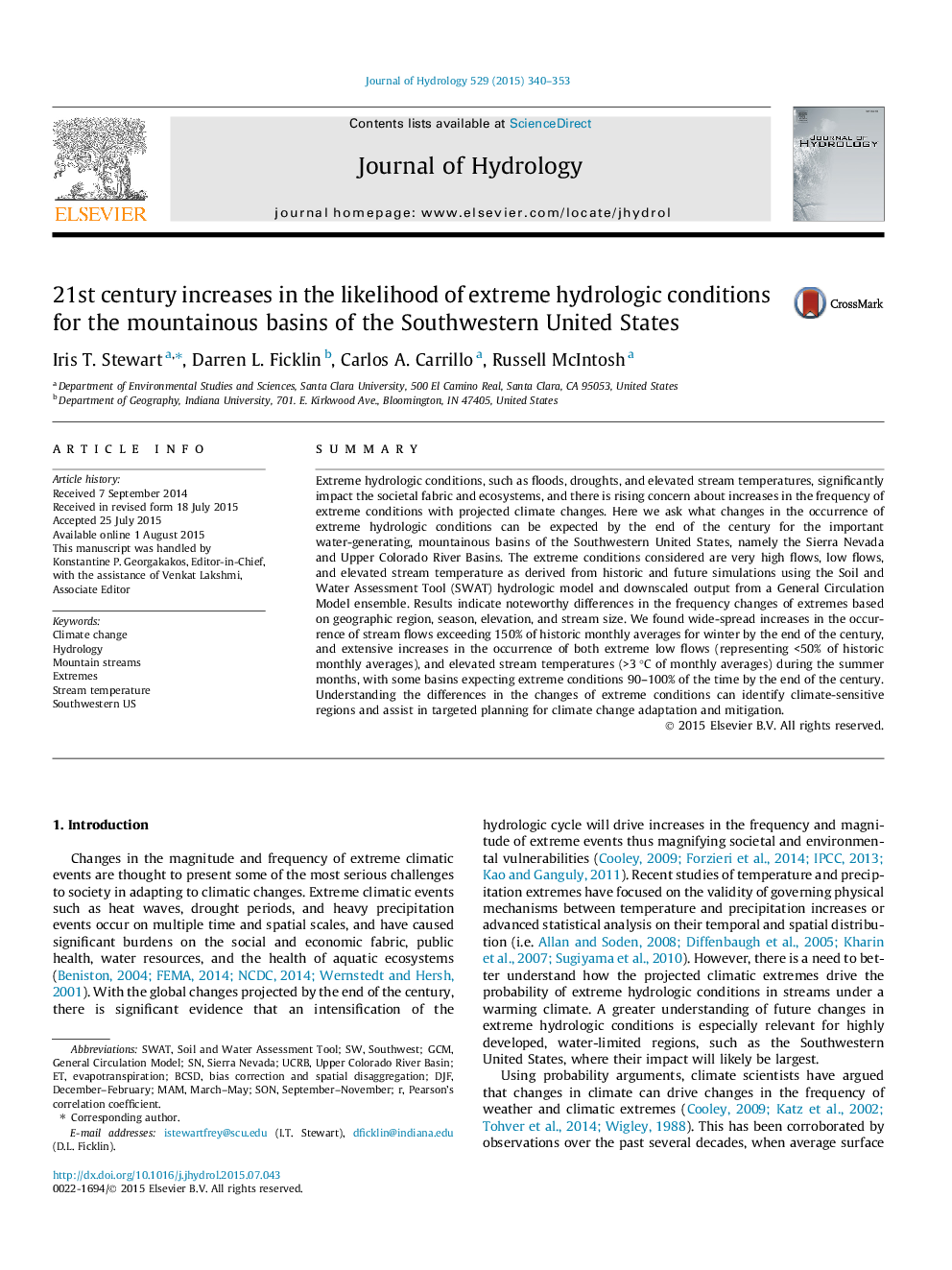| Article ID | Journal | Published Year | Pages | File Type |
|---|---|---|---|---|
| 6411010 | Journal of Hydrology | 2015 | 14 Pages |
â¢Climate change in US Southwest drives significant changes in hydrologic extremes.â¢Occurrences of extreme conditions rise from 5% historically up to 70% by 2100.â¢Winter flood increases linked to geomorphologic region, elevation, and stream size.â¢Extremes in low flows and stream temperatures are uniformly projected throughout SW.â¢Projected extremes suggest important consequences for water supplies and ecosystems.
SummaryExtreme hydrologic conditions, such as floods, droughts, and elevated stream temperatures, significantly impact the societal fabric and ecosystems, and there is rising concern about increases in the frequency of extreme conditions with projected climate changes. Here we ask what changes in the occurrence of extreme hydrologic conditions can be expected by the end of the century for the important water-generating, mountainous basins of the Southwestern United States, namely the Sierra Nevada and Upper Colorado River Basins. The extreme conditions considered are very high flows, low flows, and elevated stream temperature as derived from historic and future simulations using the Soil and Water Assessment Tool (SWAT) hydrologic model and downscaled output from a General Circulation Model ensemble. Results indicate noteworthy differences in the frequency changes of extremes based on geographic region, season, elevation, and stream size. We found wide-spread increases in the occurrence of stream flows exceeding 150% of historic monthly averages for winter by the end of the century, and extensive increases in the occurrence of both extreme low flows (representing <50% of historic monthly averages), and elevated stream temperatures (>3 °C of monthly averages) during the summer months, with some basins expecting extreme conditions 90-100% of the time by the end of the century. Understanding the differences in the changes of extreme conditions can identify climate-sensitive regions and assist in targeted planning for climate change adaptation and mitigation.
